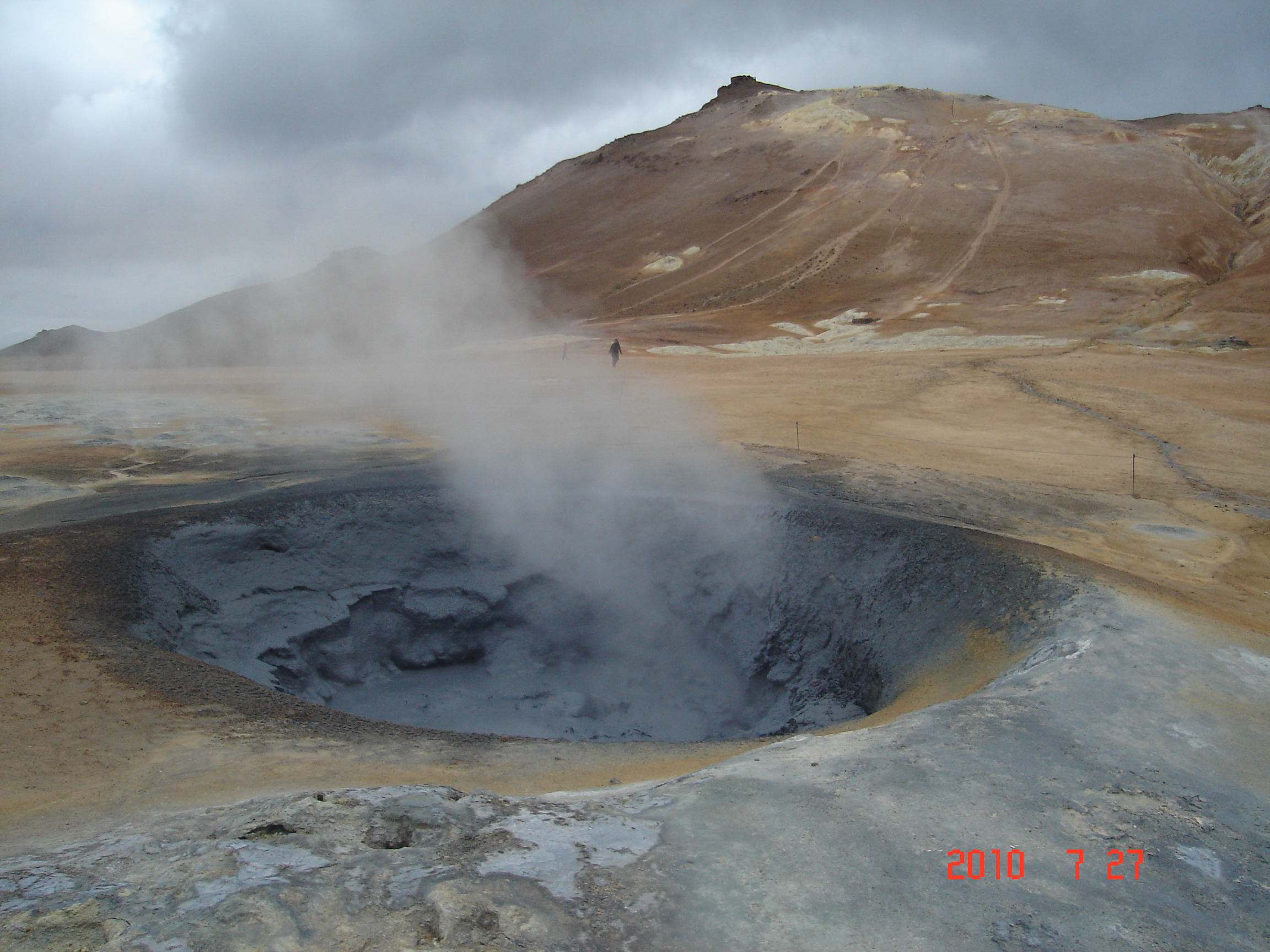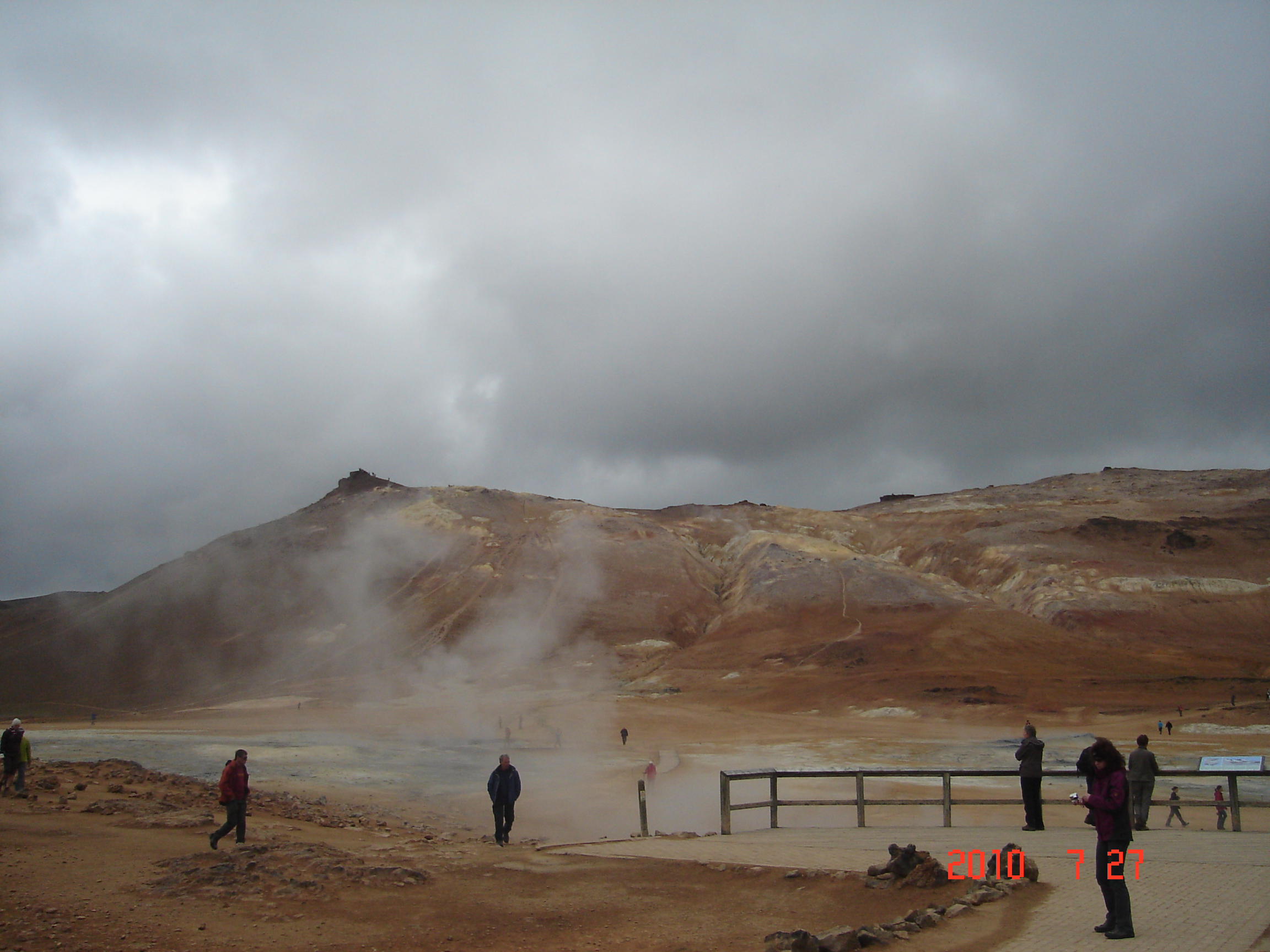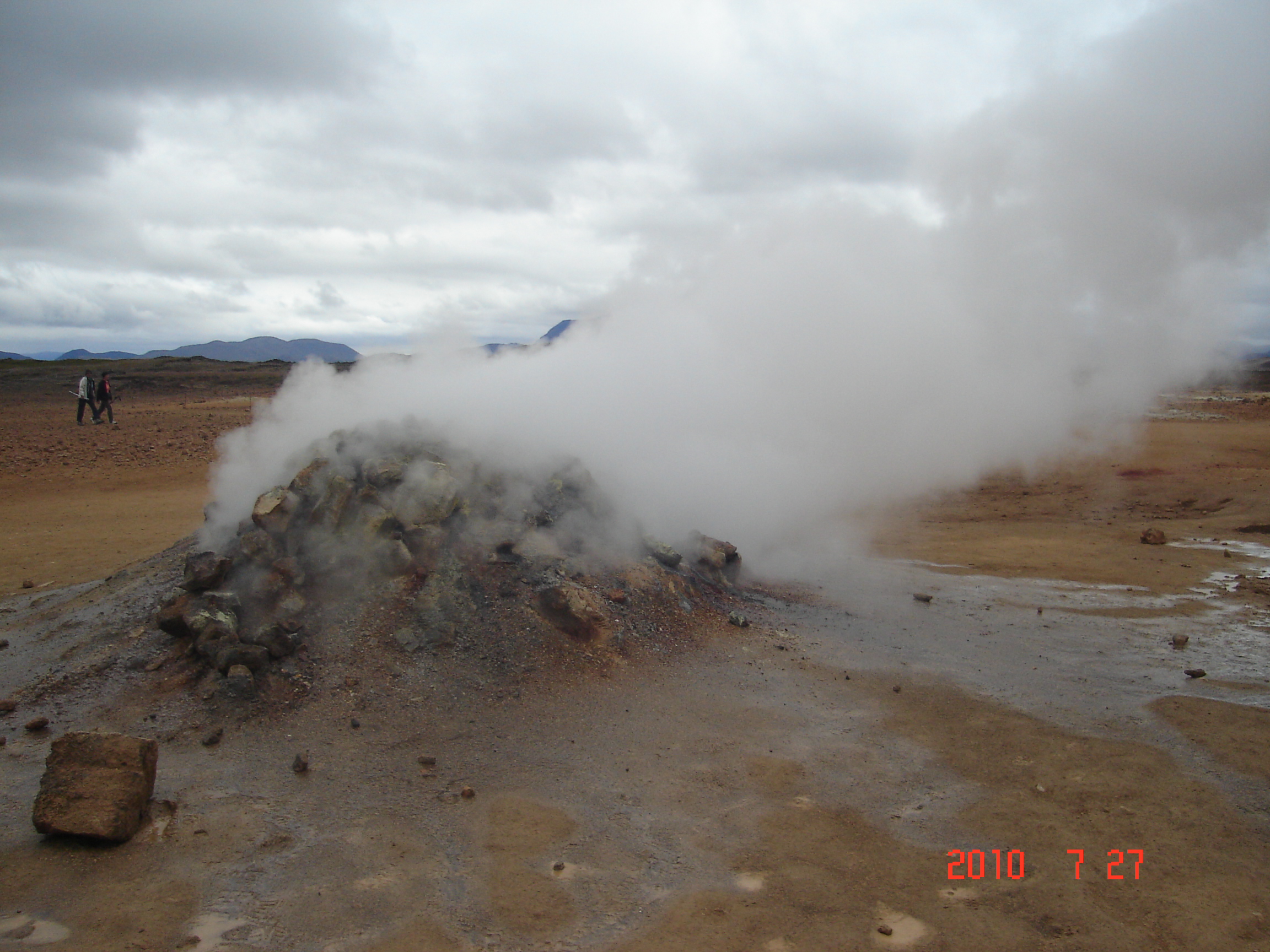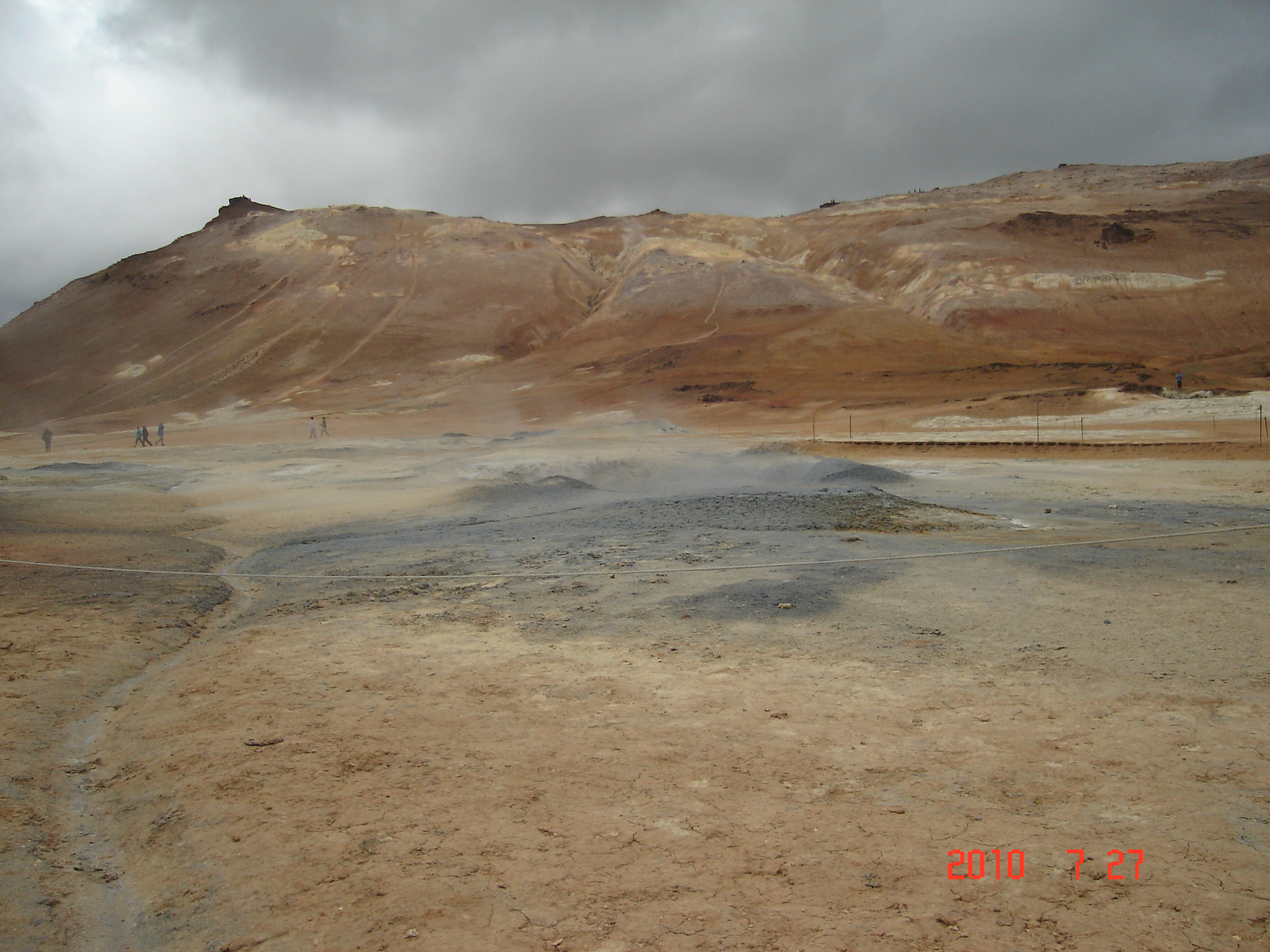Day 3, July 27th – Námaskard/Námafjall – Hverir
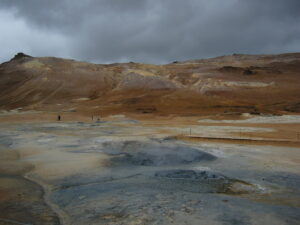 Námaskarð pass, situated in the north of Lake Mývatn, is a wonder you must visit. Námaskarð Pass is a geothermal area on the mountain Námafjall.
Námaskarð pass, situated in the north of Lake Mývatn, is a wonder you must visit. Námaskarð Pass is a geothermal area on the mountain Námafjall.
Traversing Mt. Námafjall at an altitude of 410 m, this pass derives its name from the 19th century sulfur recovery. The area makes up part of the geothermic zone of Reykjahlíð, some 8 km away from Krafla. Námafjall (bjergværksfjeldet) is deived from production of sulphur used for production of gunpowder.
At the foothills of this spectacular volcanic mountain is an expanse of hot springs called Hverarönd or Hverir that are known for their changing variety. You may also find a number of fumaroles, mud pools and mud pots that all seem to be boiling with relentless energy. The pass Námaskarð is strategically located at a short distance from the Krafla volcano system as well as other interesting geological spots like Búrfellshraun and the desert Mývatsöræfi. While visiting Námaskarð, you must not miss the Heißquellengebiet, lava formations of Dimmuborgir, pseudo craters of Skútustaðir and the historic waterfall Goðafoss by the road.
However, Námaskarð earns its notoriety chiefly because of its sulphurous mud springs called solfataras and steam springs called fumaroles. Though you will scarcely find any pure water spring in this wonderful geothermal site of Iceland, the beauty of the colorful minerals defies all comparisons. The gigantic size of the mud craters is what makes you go ‘wow’ at the sight of them. Mudpots/paintpots similar to those in Iceland can be seen in Yellowstone National Park and New Zealand.
The other thing that is sure to strike you about Námaskarð is the sheer lack of vegetation. However, if you give a thought to the high temperature range, it does not appear an impossibility altogether. The constant emission of the fumes has made the ground utterly sterile and acidic, unfit to sustain any floras and faunas. You must bear in mind that the fumes can be harmful for humans as well.
The efflorescence of the sulphuric gases and hydrogen sulphide lets loose a riot of colors to flood the neighboring rhyolite rocks of this region. The view of the bubbling and overhanging fog gives you a feeling that you have arrived at some extraterrestrial land or is it the gateway to hell!
